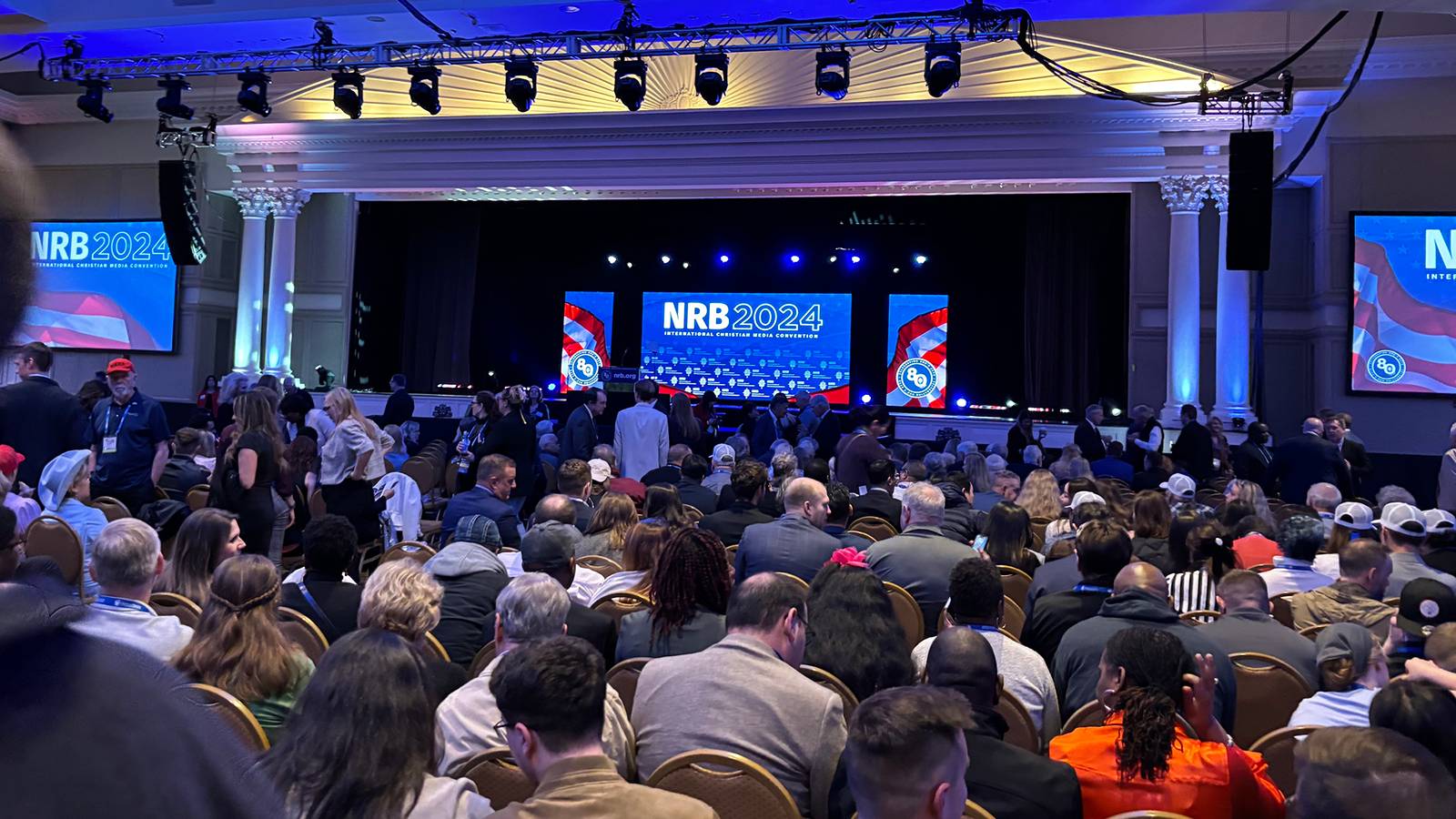Andar Ismail, a prolific Christian writer who distilled theological truths into short stories accessible to ordinary Indonesians, died of congestive heart failure on August 25. He was 84.
From 1981 to 2022, the pastor and seminary professor wrote 33 books, each containing 33 short stories, for his Selamat series. Ismail described his literary style as gado-gado (“hodgepodge”)—after an Indonesian dish with mixed vegetables and peanut sauce—because the stories were an amalgamation of genres: Bible exposition, stories of Jesus or characters of the Bible, church history, biographies of Christian figures, comments on books or art, humorous anecdotes, and personal reflections.
While other Indonesian Christian authors wrote for the educated class, Ismail’s books were entertaining and simple enough for lay Christians—as well as nonbelievers and people of other faiths—to grasp. And the readers abound: His books have sold tens of thousands of copies, a rare feat in Indonesia, where interest in reading is low.
Even after finishing the Selamat series, he published two more collections of short stories. In addition to his literary contributions, he also pastored Indonesian Christian Church (GKI) Samanhudi in Jakarta for 40 years and taught theology and Christian education at Jakarta Theological Seminary, the oldest seminary in the country.
The 33 books of the Selamat series, and the 33 stories in each one, honor the number of years Jesus lived on earth, Ismail once told Validnews Indonesia. (Selamat is the Indonesian word for “greetings, congratulations, and salvation.”)
“I was mesmerized … by the 33 years of Jesus’ life,” Ismail said. “How he was still so young, yet he had done so much. A short yet very impactful life.”
Born as Siem Hong An in 1940, Ismail was raised in a poor Christian Chinese-Indonesian family in Bandung, West Java. When Ismail was a child, his father, who owned a small factory, suffered from a prolonged lung illness that left him unable to work, forcing Ismail’s mother to support the family by selling homemade cakes. The fourth of six children, Ismail recalled his family receiving food and payment for school fees from their local church.
Yet despite what they lacked financially, Ismail’s mother nurtured her son’s imagination through telling stories and encouraging him to make up his own. Even though he only had leaves and branches to play with, he created his own imaginary world.
Beginning at age four, his mother brought him to Sunday school, where he loved to listen to Bible stories. He recalls in his book Tukang Ngantar Selamat (Courier of Salvation) how, one time, his Sunday School teacher, Sioe Bing, enthusiastically told the story of Jesus quieting the storm on the Lake of Galilee. As he waved his arms to portray the raging seas, he accidentally slapped Ismail’s face.
Yet Ismail looked back at that moment fondly, because it awoke in him a new dream. When the “waves of Galilee” landed right in his face, the seed for his future was planted. It then blossomed several years later when he wrote, “I want to walk along the same path as Uncle Sioe Bing. I want to be the storyteller of the Bible.”
Ismail nourished that love of stories by frequenting the Bandung library, where he read books by Hans Christian Andersen and Charles Dickens, as well as a local Christian bookstore, where he read Dutch theologians Johannes Verkuyl and Hendrik Kraemer. At a young age, he saw the power of writing. While delivering newspapers, he realized that people would wait eagerly for him to bring them the latest issue and that this anticipation made him feel important. Ismail reasoned that if the deliverer of the newspaper was indispensable, how much more was the writer of the newspaper? “Since then, I wanted to be a writer,” Ismail told Validnews.
At 18, Ismail studied at Balewijoto Theological School in Malang, East Java, to become a pastor. Once again, his church rallied around him to help him pay for schooling. At times, he found his teachers difficult to understand, as they used words that felt esoteric and gave long-winded lectures. But this challenge only further motivated him to become a writer and teacher. “I wrote, driven by the desire to explain something difficult easily, not long but brief, not boring but captivating, and with humor,” Ismail told Validnews.
After graduation in 1963, he began serving at GKI Samanhudi, a Presbyterian church. Two years later, he was ordained and married his wife, Constance (Stans) Budihalim, a Sunday school teacher. He served at GKI Samanhudi for 40 years, occasionally studying abroad. Among others, he studied at a university in Utrecht, Netherlands; Presbyterian University and Theological Seminary in Seoul; and Union Presbyterian Seminary in Richmond.
In order to equip the next generation of Indonesian pastors, Ismail started teaching theology and Christian education at Jakarta Theological Seminary as a part-time lecturer in 1978. He went on to become a full professor and taught at the seminary until 2005.
During Ismail’s funeral, one of his students, Nanang (who only goes by this one name), shared that he was once called into Ismail’s office after a pedagogy writing class. “My heart was beating fast because he was known as a very strict lecturer,” Nanang said. When Nanang entered the room, Ismail was holding the paper he had turned in. His anxiety faded as Ismail asked for his permission to share Nanang’s writing as an example for his younger students.
“I considered this as his way of appreciating my writing,” Nanang said. Now a pastor of GKI Mangga Dua Church in Jakarta, he often shares his writing on social media.
Ismail’s childhood dream of becoming a writer first came to fruition in 1981 while he studied in Seoul. There, he wrote his first collection of 33 short stories, entitled Selamat Natal (Merry Christmas). It included biographies of John the Baptist and King Herod, a story entitled “If Jesus was born in Jakarta,” and an essay on how Christmas is only meaningful if we accept Jesus’ death on the cross for our sins.His second book, Selamat Paskah (Happy Easter), was published a year later, in 1982.
The books received a positive response from readers. Yet it would be another decade before Ismail published more books in the series, as he was busy teaching and then pursuing his PhD in the US. When he returned to Jakarta to become a full-time lecturer at Jakarta Theological Seminary, his publisher, BPK Gunung Mulia, asked him to continue the series.
It took him a few more years, but in 1992, he wrote the third book in the series, Selamat Pagi Tuhan! (“Good Morning, Lord!”), and then started to write one book a year until he finished all 33 books in 2022. Ismail wrote each book by hand, and his close friend Sunoko Nugroho Samiadji then transcribed it on the computer. Samiadji, who viewed Ismail as his spiritual father, was inspired by Ismail’s discipline and perseverance to keep writing when he was ill.
“He had even completed ten story drafts for his next books, although his health had substantially been deteriorating these last four months,” Samiadji said after Ismail’s passing.
Ismail’s Selamat stories focus on the life, teachings, and practices of Jesus, including prayer, ministry, teaching, work, integrity, and love. By using down-to-earth language, Ismail hoped to help readers examine their lives and faith.
To connect with people of other faiths, some of his stories describe how Muslim poets and artists viewed Jesus.
One famous journalist and writer, Sobron Aidit, said on the back cover of one of Ismail’s books that while he was a Communist and exposed to Islam in his earlier years, he was “often confused, looking for a handle on various problems.” Friends sent him the Selamat series, and he said his “heart was touched, and the more I loved Andar’s writing. From year to year, I continued to examine his books. Finally at the age of 66, I confessed Christ as my Savior.”
For two decades, the Selamat books were BPK Gunung Mulia’s bestsellers. For his contributions to the Indonesian church, Ismail won the Christian Art and Literature Festival’s Tokoh Inspiratif (Inspirational Figure) award in August 2018.
The Christian Conference of Asia called Ismail and fellow author Eka Darmaputera “undoubtedly the most prolific Christian authors in this archipelago” on the back of a Selamat book. “Their writings are based on thoughtful theological scholarship, yet easily consumed by the average parishioner. Both Eka and Andar have been a substantial asset for the churches in Indonesia … in communicating the heart of the Gospel to the heart of the people.”
Binsen Samuel Sidjabat, lecturer at Tyranus Bible Seminary, largely praised Ismail’s work, yet he noted a theological shift in two of Ismail’s later stories. While his early works stress salvation only through Jesus, his later works seem to question John 14:6, which says, “I am the way and the truth and the life. No one comes to the Father except through me.” His story “The Only Way?” says this verse merely points to the early church’s high respect for Jesus, and his story “Is Christ the Only Way?” says it explains Jesus’ relationship with the Father.
Ismail’s children remember their father continually pointing them to Christ.
His daughter, Atikah, recalled that when she was about 12 and her brother Syarif was 10, her father came home one night and said he had a gift for them. He handed them his Bible, and the children wondered if the gift was hidden inside. Atikah said, “We searched and searched from the front to the last pages, but we could not find any envelope or other things.” Later, she realized that her father wanted to teach them that the most precious gift a father could give his children was the Word of God.
Near the end of Ismail’s life, Samiadji moved in to help take care of Ismail, who had prostate surgery in April, and his wife. As Ismail’s health deteriorated in late August, Samiadji said that he had prayed, “Dear Lord, you have given me so much. But, with your consent, I ask you that I will not get sick for long, which will make others’ lives miserable from taking care of me.” Samiadji said he was concerned about burdening his wife.
Not long afterward, Ismail passed away peacefully. Ismail is survived by his wife, two children, and two grandchildren.




























































